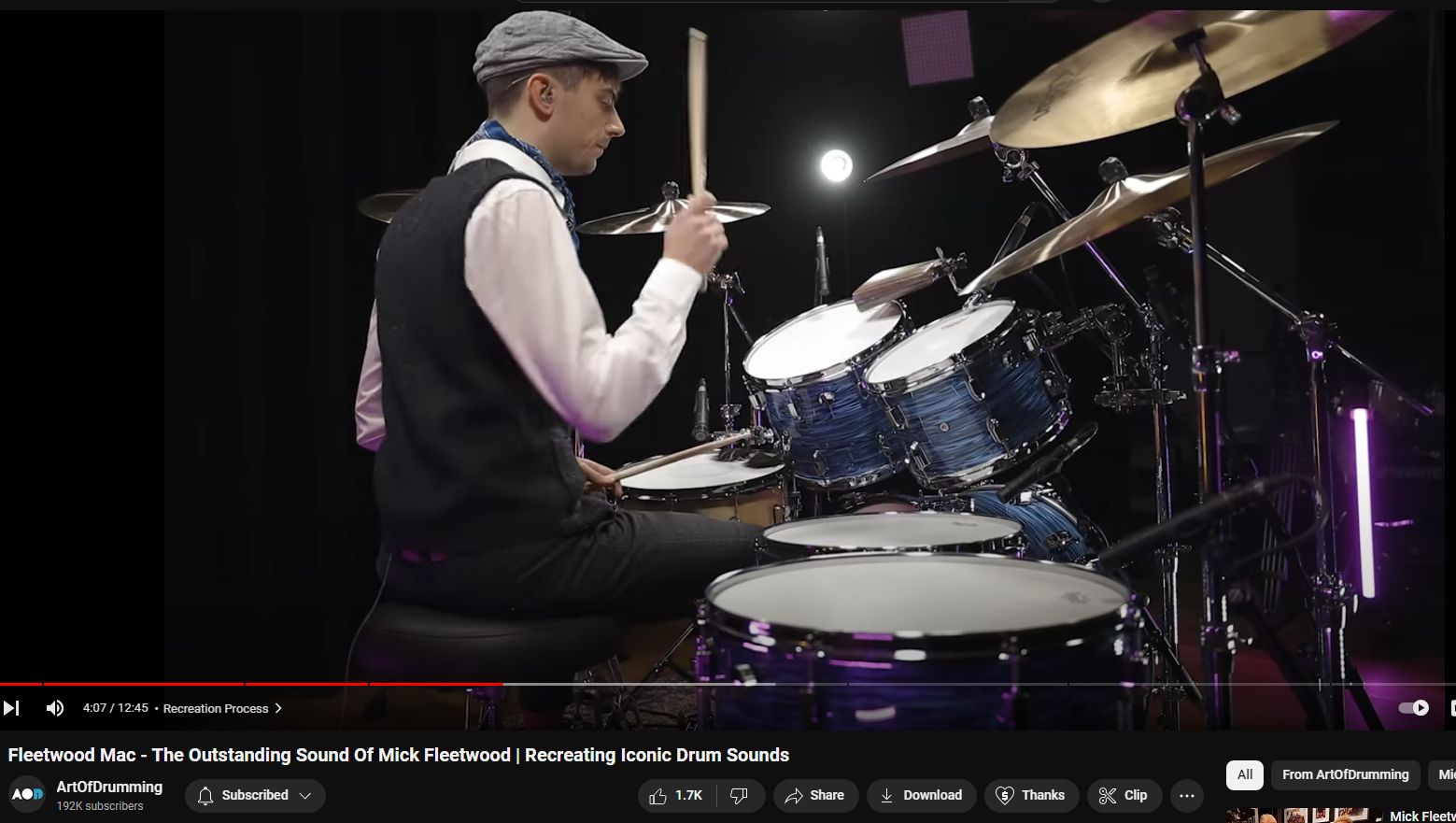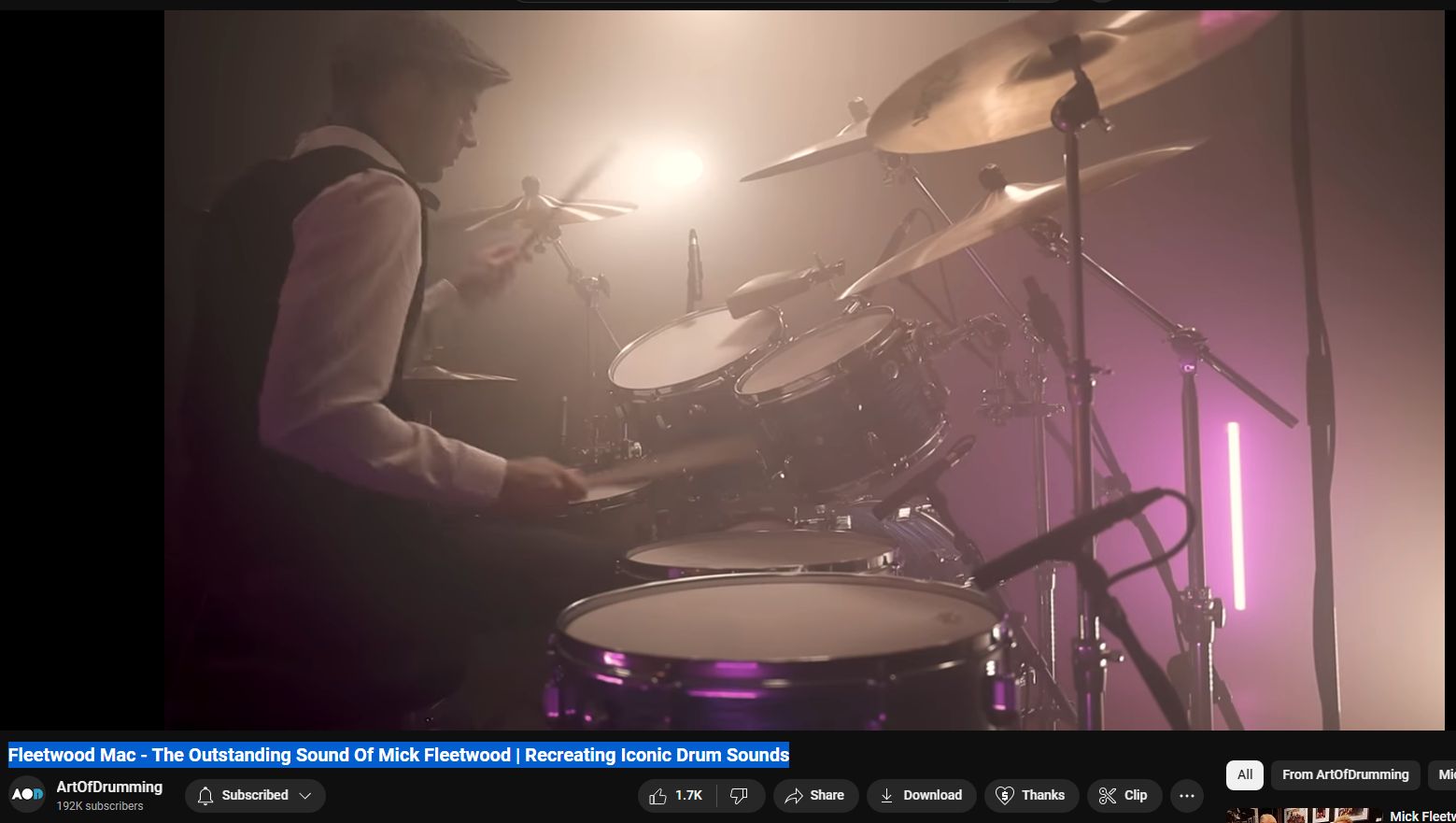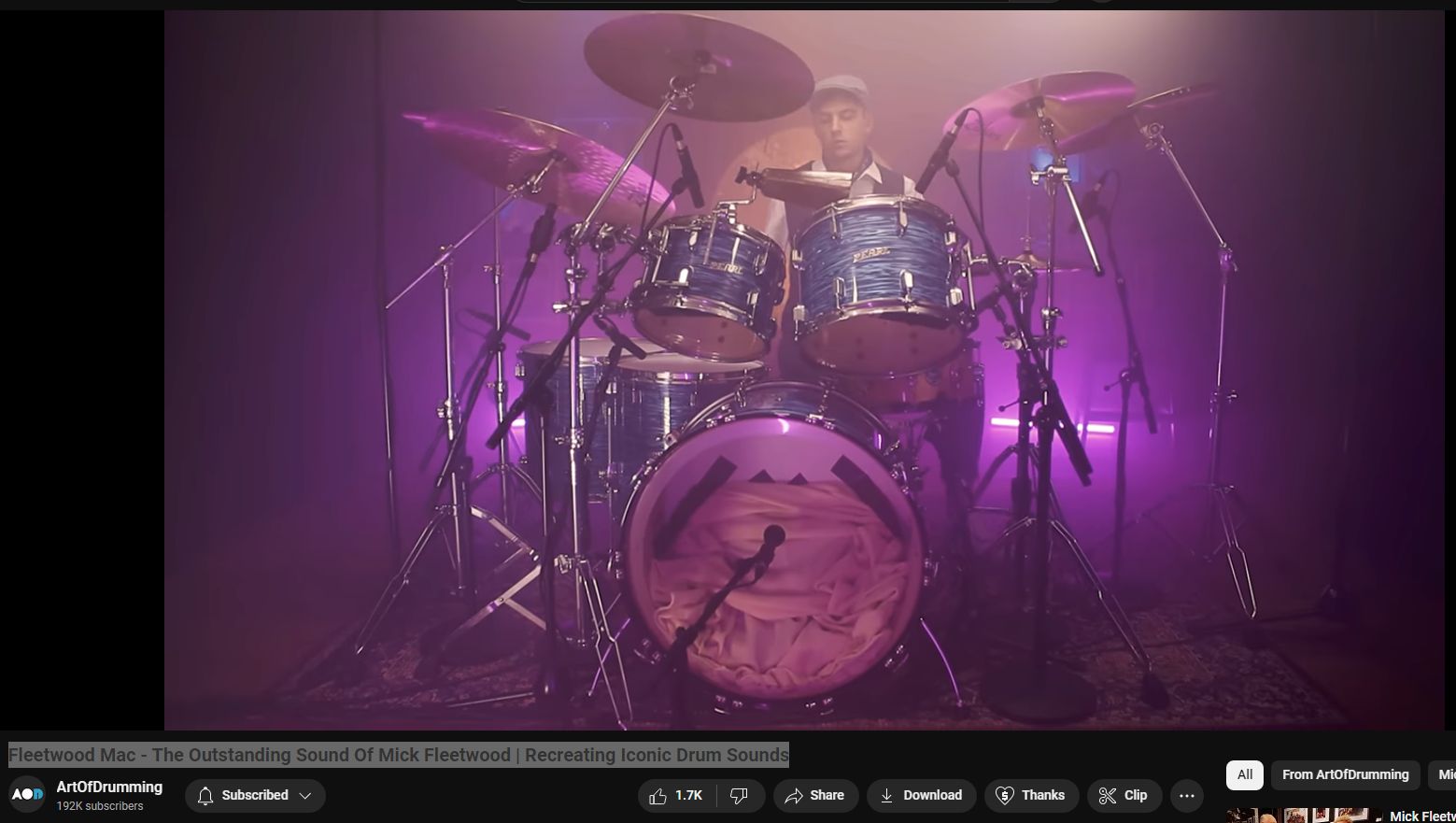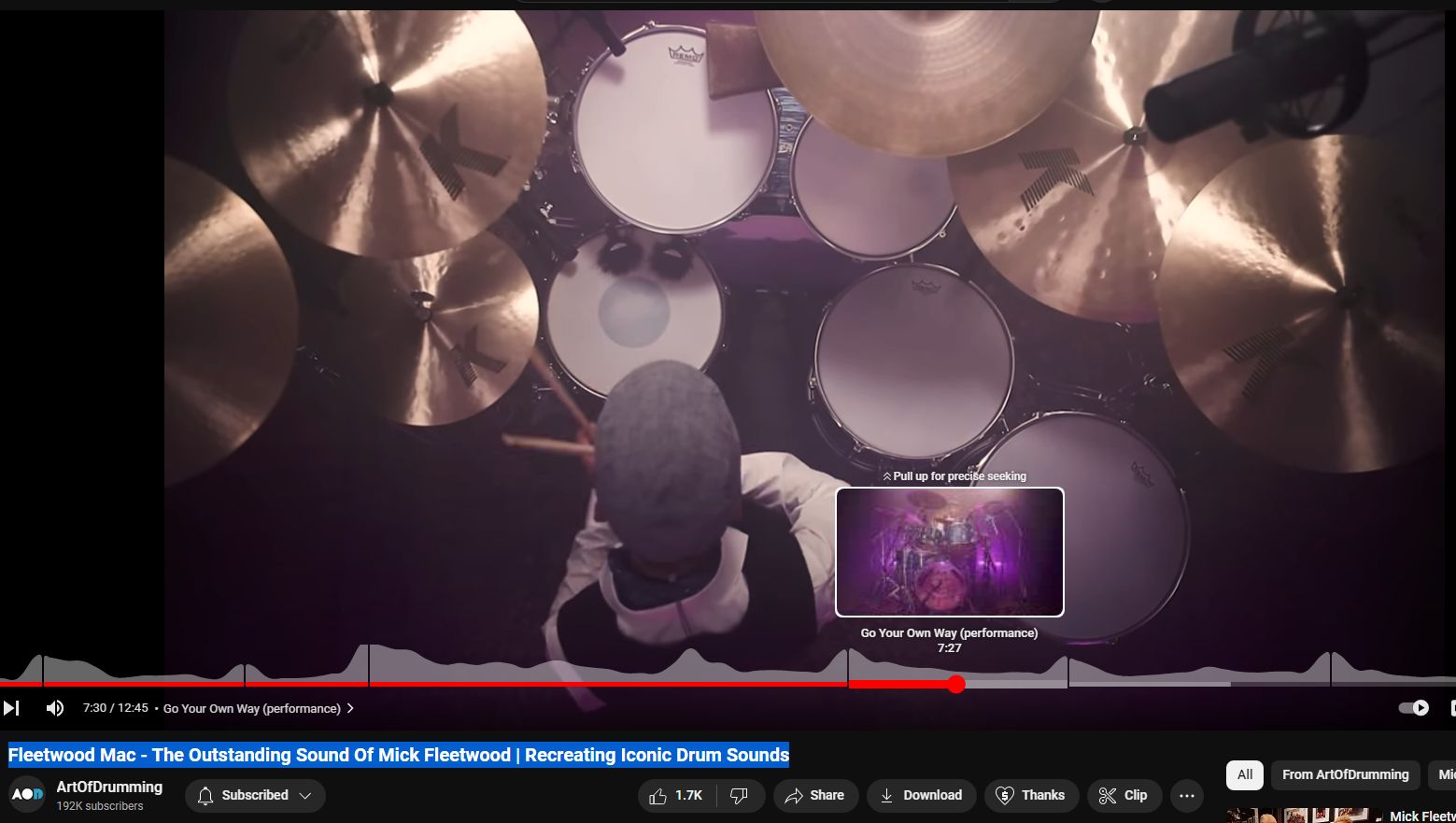Outstanding Sound of Mick Fleetwood




Fleetwood Mac Recording Technique, Drum Sound
Fleetwood Mac, particularly during the era of their critically acclaimed album “Rumours” (1977), is known for their meticulous approach to recording and their distinctive, polished sound. One of the most celebrated aspects of their production is the drum sound, especially the work of their drummer, Mick Fleetwood, and the innovative recording techniques used by the production team. Here’s an overview of some of the techniques and approaches that contributed to the iconic Fleetwood Mac drum sound:
Layering and Separation
– Isolation: To achieve clarity and precision in the drum tracks, the recording often involved close miking of individual drum kit components, such as the snare, kick drum, toms, and cymbals. This isolation helped in achieving a clean sound that could be easily manipulated during mixing.
– Layering: The production often employed layering techniques, where multiple takes of a drum part would be recorded and then layered together to create a fuller, richer sound.
Sound and Space
– Room Mics: The use of ambient microphones placed at a distance from the drum kit captured the natural reverberation and acoustics of the recording space, adding depth and space to the drum sound. This technique was crucial in creating a drum sound that felt both intimate and expansive.
– Damping Techniques: Strategic damping of drum skins and the use of specific materials (like moon gel) to control overtones and sustain on the drum heads contributed to the tight, controlled sound of the drums.
Innovative Techniques
– “The Lindsey Buckingham Method”: For the album “Tusk” (1979), guitarist Lindsey Buckingham took a more experimental approach to production, including the drum sound. This included unconventional miking techniques and exploring different environments for unique sounds, such as recording drums in bathrooms or hallways to capture unusual reverb.
– Synthesis and Samples: While more analog and acoustic in their earlier albums, Fleetwood Mac didn’t shy away from incorporating modern technology, including drum machines and synthesizers, in their later work, blending electronic elements with acoustic drum sounds for a modern feel.
Mixing and Effects
– Gated Reverb: Although not specific to Fleetwood Mac, the use of gated reverb on drums became a defining sound of the 1980s, shortly after the era of “Rumours.” This effect, which involves applying a gate to the reverb of a drum recording, creates a punchy, yet spacey drum sound. While Fleetwood Mac’s “Rumours” era predates this trend, the clear and upfront drum sounds on the album anticipated the direction of pop and rock production.
– Attention to Detail in Mixing: The mixing process for Fleetwood Mac’s recordings paid careful attention to the balance and EQ of the drum tracks, ensuring that each hit sat perfectly in the mix without overpowering other instruments.
The iconic drum sound of Fleetwood Mac is a testament to the band’s commitment to sonic excellence and the creative recording techniques of the era. The combination of Mick Fleetwood’s distinctive drumming style, innovative recording and mixing techniques, and the band’s overall approach to music production created a timeless sound that continues to influence musicians and producers today.